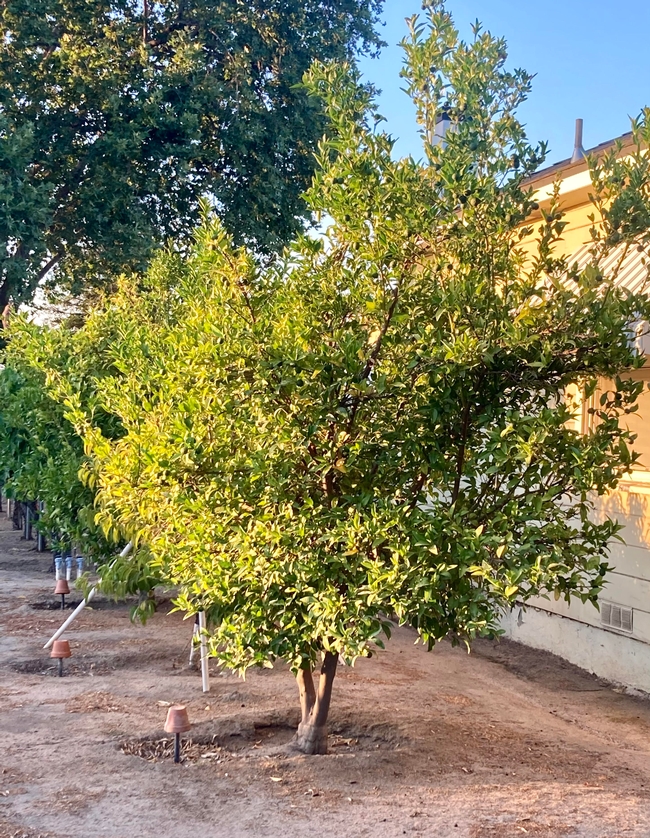
We need to deep irrigate more frequently than the previously recommended once a month and deep irrigation must begin at least one day before temps are predicted to be above 95 to 100 degrees for several days.
Check soil moisture levels underneath large landscape trees and deep irrigate whenever the top 5 to 6 inches of soil is dry. That could be several times a month from June to October. Younger trees and bushes planted within the last three years also may need several soakings a month. Soaker hoses are the most efficient and effective means of delivering deep slow irrigation at the outer edges of the canopy where the feeder roots lie but small oscillating sprinklers will also work. Drip emitters are not as effective. It will take at least 3 to 4 hours of slow irrigation for water to penetrate and soak the root zone.
Insufficient water is the most common cause of poor crop set and premature fruit and nut drop. Fruit and nut trees need regular deep irrigation to maintain consistently moist soil from bloom until harvest time. Citrus trees need sufficient water in spring to set fruit and regular deep irrigation in summer through fall in order to hold and produce good-sized, juicy fruit.
During heat spikes, monitor soil moisture levels under citrus trees and deep irrigate whenever the top three to four inches of soil has dried. Plan on irrigating citrus every 3 to 4 days during heat spikes in July and August and once a week during the warm fall months.
Cool-climate redwood trees have been heavily planted in the hot and arid Central Valley to provide dense shade. Often in spaces too small for the mature tree. As a common practice, redwood trees are thinned and lower branches are removed. The heavy branch structure on redwoods creates a cooler microclimate in the interior of the canopy and thinning and removing branches on redwoods exposes the trunk and bark to the hot rays of the sun and high temperatures.
In July, the inner needles on redwood trees will turn brown and fall. It's a normal process referred to as redwood dieback. The fallen needles form a thick mulch that will help cool the soil for these shallow-rooted trees and also slow evaporation. Redwoods will benefit from increased deep slow irrigation in summer.
Branch tip dieback is the earliest and most visible sign of drought-stress. Even one long-lasting heat spike without sufficient irrigation can cause tip die back on any type tree. Gusty winds now often accompany heat spikes. Dead branches can become hazardous projectiles and should be trimmed off when noticed, but corrective pruning to reshape branch scaffolding should wait until deciduous trees are dormant in late fall and winter.